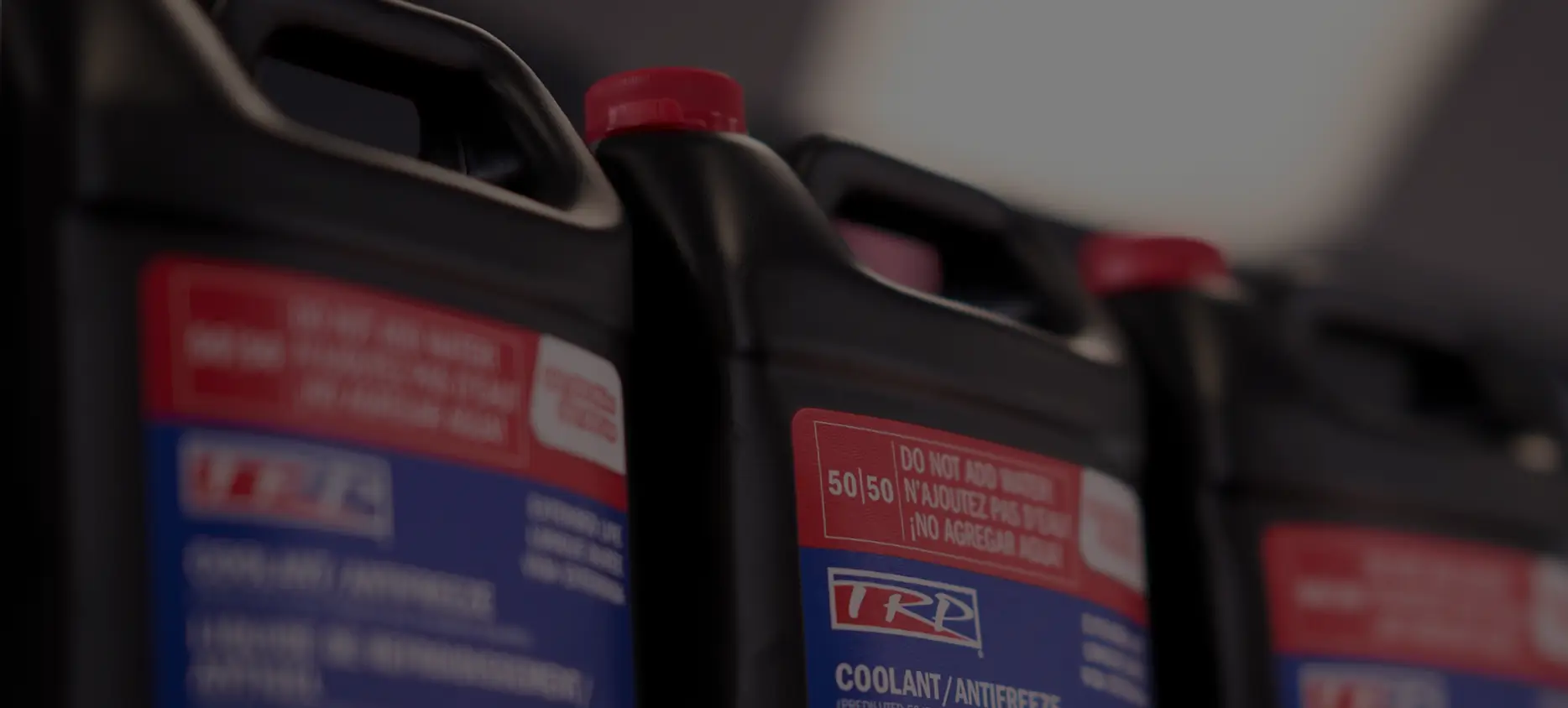
TRP® EXTENDED LIFE COOLANT
THE BEST CHEMISTRY NOW RUNS FARTHER
Fleet and truck owners demand maximum uptime performance to meet their customers' critical shipping needs. Through continuous field testing in PACCAR’s MX engine and other major engine platforms, engineers determined TRP® Extended Life Coolant (ELC) performance can be increased by 33 percent. This top-tier coolant now provides 1,000,000 miles/8 years of service life without coolant extender or supplemental coolant additive required. TRP® ELC is ideal for heavy- and medium-duty truck cooling system protection.:
PROVEN COOLING SYSTEM PROTECTION FOR YOUR TRUCK
TRP® ELC is formulated with superior inhibitors, known as Organic Additive Technology (OAT), to minimize deposits that inhibit heat transfer, and corrosion that degrades important metal parts. Traditional coolants contain mineral/inorganic inhibitors, such as phosphate, borate, and silicate. These non-OAT coolants leave mineral salt deposits on radiator tubes, which create a thermal blanket that increases the risk of downtime due to engine overheating.
Importantly, not all coolants are the same. Conventional and heavy-duty coolant formulations require inhibitors, known as Supplemental Coolant Additives (SCAs). Without these inhibitors, overheating will occur leading to significant cooling system damage and potential engine failure. Another downside of these coolants is they must be changed every 200,000–300,000 miles/2–3 years, with testing and addition of SCAs between changes.
REMEMBER THIS SAYING:
“If you don’t schedule time for maintenance, your equipment will schedule it for you.”
FEATURES AND BENEFITS
TRP® ELC is a top-tier coolant that delivers these cooling system protection benefits:
- Total cost of ownership savings
- Ease of maintenance – no SCA’s
- Improved heat transfer – no insulating blanket
- Improved water pump seal life – no abrasive solids
- Complete protection of all cooling system metals – no pitting, corrosion, or erosion
COOLING SYSTEM MAINTENANCE - NO ROOM FOR ERROR
Modern truck engines operate at higher temperatures than ever before, often in a smaller space and with tighter tolerances. While coolant maintenance is arguably a routine procedure for most trucks, around 40 percent of engine failures can be attributed to coolant related issues.
PREVENTATIVE MAINTENANCE INSURANCE
With so little room for error, proper coolant maintenance is critical to ensure maximum uptime and avoid costly repairs. To help guide you, TRP® now offers a custom, TRP®-branded coolant maintenance test kit. Best practice to ensure optimum cooling system protection is to use the TRP® Coolant Maintenance Kit. It serves as cost effective insurance to verify the coolant condition, diagnose potential trouble areas and mitigate them before they lead to downtime issues.
We encourage you to regularly inspect and maintain your engine coolant. Coolant should be at the appropriate full level when the level is checked (a hot engine should be at appropriate “hot” level, cold at appropriate “cold” level). Inspect the coolant for debris, oil, discoloration, or foul odor. If the coolant is dark, it should be replaced.
CONFIRM COOLANT FREEZE POINT
Verify coolant fluid ratios for freeze point by using a refractometer each time the truck is brought in for service.
The freeze point should be between -32°F to -37°F. The acceptable freeze point range is between -12°F to -60°F, but some fluid ratio correction may be needed if the freeze point falls near the limits of the acceptable range. If the freeze point falls outside of this range, the coolant should be replaced.
CONFIRM COOLANT PH LEVEL
Fresh coolant has a pH level typically just above 8. A neutral fluid has a pH of 7. It is critical to verify that the truck coolant has not dropped below 7, becoming acidic due to a gasket leak or EGR cooler failure. Acidic coolant will lead to cooling system damage. Acidic coolant should be immediately drained and replaced with fresh TRP® ELC.
CORRECT WHERE NEEDED
When conducting regular coolant inspections, be prepared to take immediate corrective measures if you notice any irregularities. Corrective measures could include topping off coolant levels, adjusting fluid ratios, or complete replacement. Coolant may not be the first thing on your mind when purchasing a new vehicle.
ALWAYS USE DEIONIZED WATER
Always use deionized water whenever adding water to correct over-concentrated coolant conditions. Regular tap water can contain calcium and magnesium ions that can lead to hard water scale deposits. Scale build up can break free and cause damage to water pump seals, causing leaks. Hard water scale build up can also reduce heat transfer performance and can eventually block heat transfer tubes.
THE RISK OF POOR COOLANT MAINTENANCE PRACTICE
A large national fleet had been having Exhaust Gas Recirculation (EGR) cooler issues which were not being diagnosed early enough to address. At one point they were averaging 12 EGR cooler failures a month. After setting up a best-in-class preventive maintenance coolant test schedule they were able to reduce these from 12 to less than 1 per month, generating a large, ongoing, operations savings gain.
What does an EGR cooler failure cost when you factor in:
- Displaced driver?
- Payload not delivered?
- Towing to the dealer?
- EGR cooler replacement?
Those costs add up fast and can be several thousand dollars in costs per down truck. Additionally, there is the negative impact to customer service and reliability performance metrics when you cannot meet your commitments due to downtime.
COOLANT COMPARISON
Conventional
Heavy-Duty
TRP® Extended Life